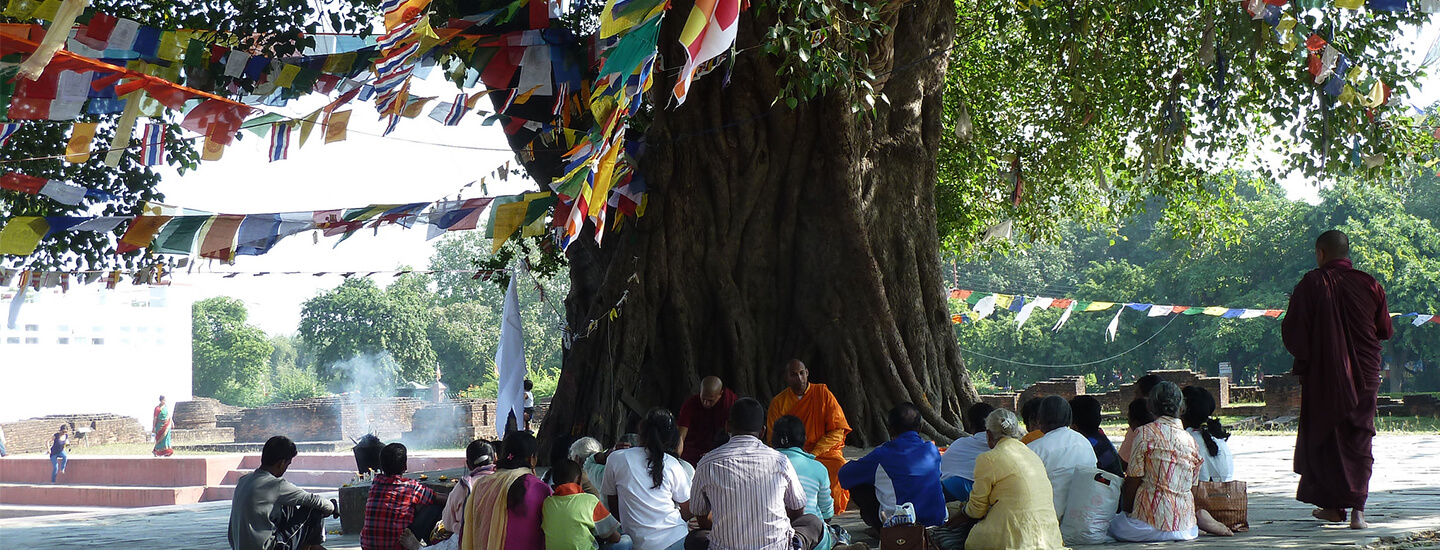The Bodhi Tree
For forty nine days Siddhartha sat under a peepal tree on a bed of kusha grass and reached into the depths of his mind to search for the truth. The poet-philosopher Ashwaghosha who wrote the Buddhacharita, a biography of the Buddha, calls this tree the navel of the earth. As the symbol of the faith this tree has been attacked and many have tried to destroy it but it still flourishes today. The present tree is a descendent of the original tree as it has been grown from a sapling from the tree at Anuradhapura.
Below the tree is a stone platform called the Vajrasana or the Diamond Throne that marks the spot where Siddhartha sat on his simple seat of kusha grass. This stone slab is an ancient one with carvings of swans and flowers that probably dates from the Mauryan period. This sandstone slab rests on a stone base with carvings of dwarves that is from the Gupta period.
There are many legends of how people have tried to destroy the Bodhi tree. One of them was Tissyarakshita, a young queen of Ashoka who was so jealous of the king’s devotion to the tree that she had it cut down. Ashoka in desperation piled earth at the roots and watered it with milk and slowly the tree revived. Later the king Pusyamitra Sunga also tried to harm the tree. Hsuan Tsang writes that a local ruler called Sasanka cut off the branches and the king of Magadha named Purnavarman did what Ashoka had done and managed to save the tree. In 2013 a series of bomb blasts took place around Bodh Gaya and one was near the Bodhi tree.


